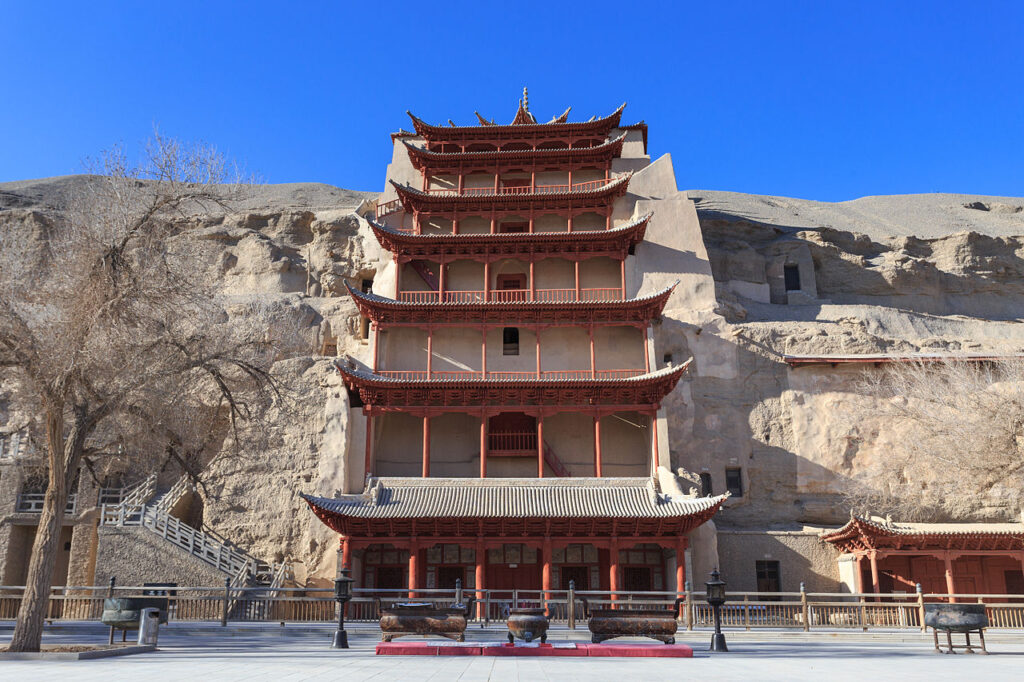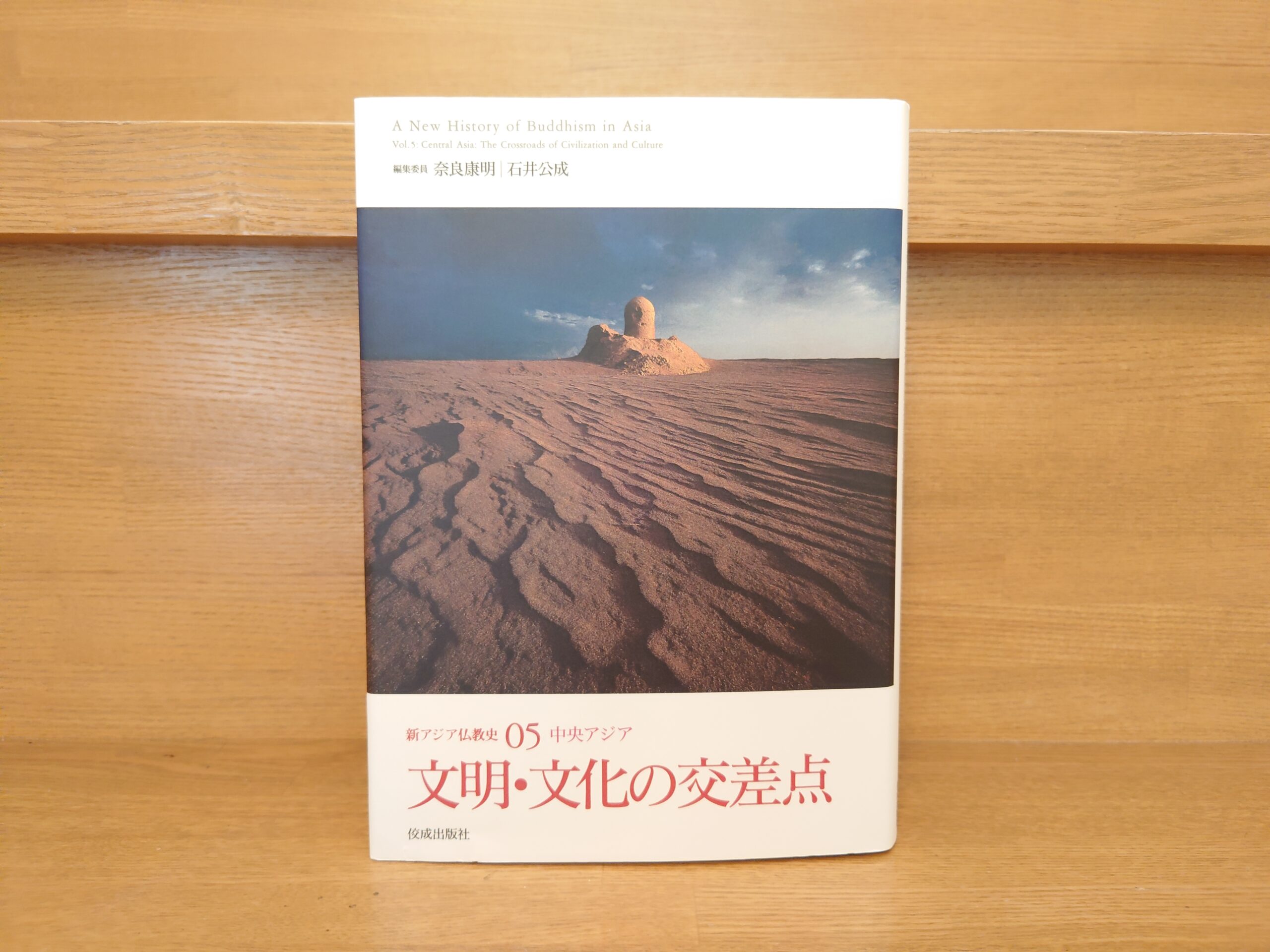Outline and Comments on "History of Buddhism in New Asia 05: Central Asia, Crossroads of Civilizations and Cultures" - What is Buddhism in the Silk Road area that played a major role in the introduction of Buddhism to China?
This issue of New Asian Buddhist History 05: Central Asia: Crossroads of Civilizations and Cultures, edited by Yasuaki Nara and Masahiro Shimoda, published by Kosei Shuppansha in 2010.
Let's take a quick look at the book.
The history of Buddhism in Central Asia began in the early 20th century with European and Japanese explorers.
However, the complexities unique to this region with its multi-ethnic history, language, and culture have hindered major advances in Buddhist studies.
Active excavations are still underway in various parts of Central Asia, and recent joint research by specialists in various fields is beginning to reveal new complexities in the history of Buddhism.
The latest results of its Central Asian Buddhist studies will be presented.The destruction of the Great Buddha in Bamiyan by the Taliban, which is still fresh in our memories, was a heartbreaking event in terms of the destruction of Buddhist heritage, but on the other hand, the discovery of the Womb Sutra from the Great Buddha has greatly advanced the study of Central Asian Buddhism. However, the discovery of the Tainai Sutra from the Great Buddha has greatly advanced the study of Buddhism in Central Asia. We hope that peace will come to the region soon and that new discoveries will be made. This volume contains information on Buddhism in Central Asia, which was not included in the previous edition. The wall paintings of Dunhuang art are explained in detail in all colors. An up-to-date map of Central Asia, including the locations of new Central Asian sites discovered in recent years.
Table of Contents
AmazonProducts Page.
Chapter 1] Beyond the Indus: Buddhism in Central Asia
Chapter 2: The Reception of Buddhism in East Turkistan and Its Development
Chapter 3: Buddhist Manuscripts of Central Asia
Chapter 4: Religious Cultures of the Excavated Materials: Focusing on Buddhism in Iranian-speaking Countries
Chapter 5] Buddhist Art in Central Asia
Chapter 6: Buddhist Beliefs and Society
Chapter 7] Dunhuang - Literature, Culture and Art

previous workA History of Buddhism in New Asia 04: Sri Lanka and Southeast Asia, Buddhism in Stillness and Motion.In the first section, we will look extensively at Buddhism in Sri Lanka and Southeast Asia, but this work discusses Buddhism in Central Asia, a region that we Japanese are not so familiar with.
As mentioned in the book introduction above, the Taliban's destruction of the Great Buddha in Bamiyan is strongly remembered by us.
I was an elementary school student at the time, and when I saw the news, I naively wondered why there was such a huge Buddha in a Muslim country.
And this Central Asian cultural influence played a major role in the spread of Buddhism to China. In the first half of the book, the following interesting words are spoken
There is a saying, "Buddhism was introduced to the three countries." It means that Buddhism was introduced to Japan (Wakuni) via India (Tenjiku) and China (Tang). Central Asia (the western region) has apparently been regarded as a mere passageway. However, Buddhism was not packed up in India and sent to China. While spreading its roots in various oases in Central Asia, a melting pot of different peoples and cultures, Buddhism arrived in China with various cross-cultural elements blended within it.
Central Asia has long been home to Zoroastrianism, which includes Mithraism (Xiangqiang (Chinese ethnic minority group)The Manichean and Christian Nestorian sects (the(Chinese term of reference to) NestorianismThe Buddhism that arrived in China was a blend of these different religions in a way that could not be seen on the surface.
Buddhism, which had been accepted from the agrarian world of the Ganges basin to the arid world of Central Asia, a land of different cultures, abandoned the rigor of traditional teaching and transformed itself into a practical and action-oriented form of Buddhism, sending a different form of Buddhism to China than in India.
Kosei Shuppansha, Yasuaki Nara and Masahiro Shimoda (eds.), New Asian Buddhist History 05: Central Asia: Crossroads of Civilizations and Cultures, p. 14
Buddhism was not packed up in India and shipped off to China."
When I read these words, I couldn't help but to be struck on my knees and say, "Oh! I couldn't help but to hit my knees and say, "Oh! What a power word!
When we think of the introduction of Buddhism from India to China, we inevitably think of this "packaging-like" image, but if you think about it, that is exactly what it is. Buddhism is also carried by people. And it is also people themselves. I think this is an interesting aspect of the transmission of ideas and culture. Neither religion nor thought is a "thing" that can be packed up and carried around. This may seem obvious, but when you think about it, it is very profound.
Well, I was numb to these words!
In this book, you will learn extensively about such Central Asian Buddhism. You will learn what was happening in the process of introduction of Buddhism to China, and what kind of Buddhism existed in Central Asia, and what the latest research findings are.
To be honest, this book is quite maniacal. If you are a beginner in Buddhism, you may find it dizzying.
However, I think it is a great read for the enthusiast. It is also very readable for those interested in Buddhist propagation.
This is a valuable book to know about Buddhism in Central Asia, which is not so familiar to Japanese people. Why not pick up a copy?
The above is "History of Buddhism in New Asia 05: Central Asia: Crossroads of Civilizations and Cultures": What was Buddhism in the Silk Road area that played a major role in the introduction of Buddhism to China?
Next Article.
Click here to read the previous article.
Related Articles





































